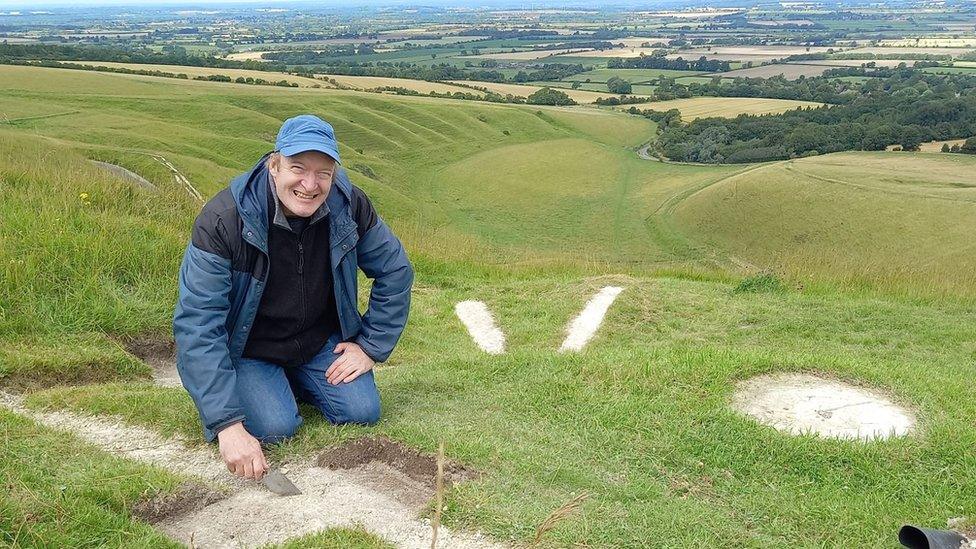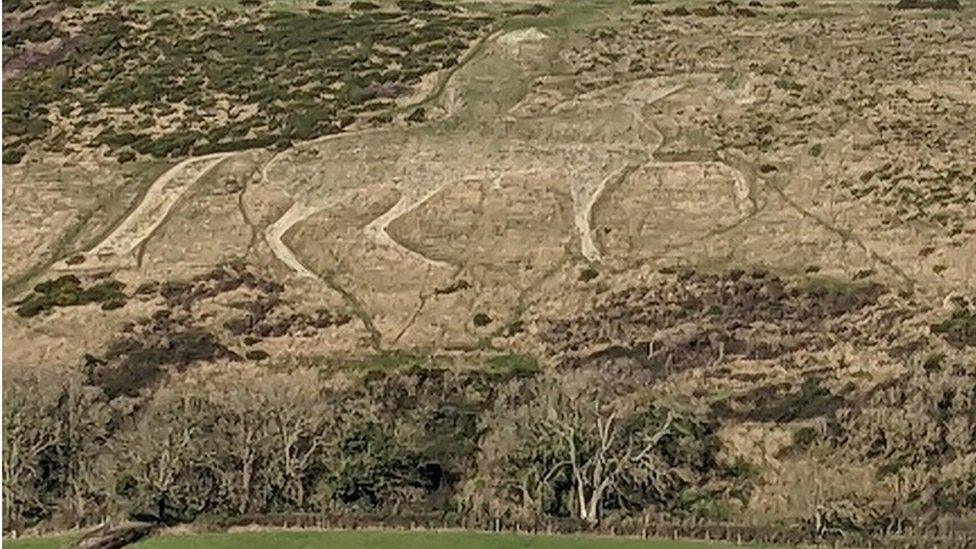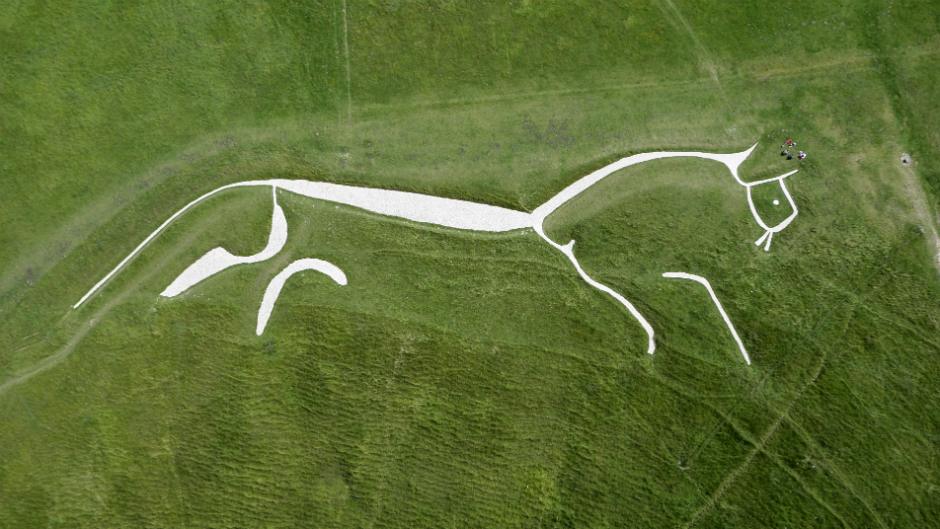Uffington White Horse: Plans to fatten up shrinking Oxfordshire chalk figure
- Published

The head and neck of the chalk figure, in particular, have got thinner, the archaeologists say
An iconic prehistoric chalk figure has shrunk over time, archaeologists have discovered.
The head and neck of the Uffington White Horse, in particular, have become thinner since the 1980s, the National Trust and Oxford Archaeology team said.
The trust said it plans to reverse the Oxfordshire landmark horse's "weight loss" and restore its original outline.
Archaeologist Adrian Cox said it was "hugely important" as Britain's oldest scientifically-dated chalk figure.
Looking at past surveys, the archaeologists suspected the figure had shrunk and set about determining by how much.

Adrian Cox said plans were being drawn up to carefully reverse the shrinkage
They carried out their investigation by digging a series of small archaeological trenches, removing only the turf, during the National Trust's annual scouring and re-chalking of the horse.
Mr Cox said: "The Uffington White Horse is set in a dramatic landscape, shaped by nature and by people through time, and this is a hugely important chalk figure, partly because it is the oldest scientifically-dated example in Britain, dating back to the late Bronze Age. "Through the efforts of generations of local people, it has been cared for and has survived as an iconic feature of this amazing landscape."
He said while it has been maintained in a similar form for centuries, "we suspected there had been a gradual reduction since the 1980s", adding: "The results of our new research show that this is indeed the case."
The turf has been replaced and plans are being drawn up to "carefully reverse the recent shrinkage and restore its original outline, all under close archaeological supervision", the archaeologist added.

Follow BBC South on Facebook, external, Twitter, external, or Instagram, external. Send your story ideas to south.newsonline@bbc.co.uk, external.
Related topics
- Published28 January 2022

- Published12 May 2021

- Published4 May 2014
